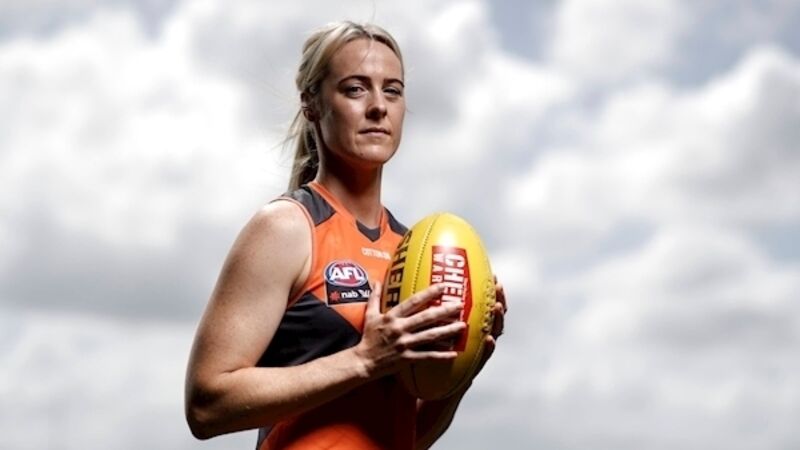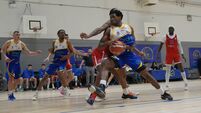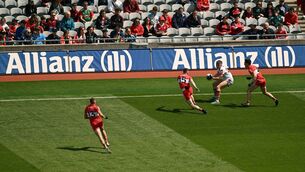The hardest decision is when there are two right answers

The King and Queen of Sweden were in Ireland last week and took in a tour of Croke Park on their trip.
One picture showed them at the ‘Club Wall’ with GAA President John Horan highlighting the crest of Stockholm GAA Club.
It’s unlikely he started to eulogise about clubs and the great players they produce, and how those players often give an identity to a place.
Driving through Birr or Cloyne or when you see a signpost for Lisdowney or Carnacon, it is natural to link them with their greatest sons and daughters.
This sense of pride at having ‘a county player’ is even more pronounced in women’s sports, moreso now with the transition of top-level GAA stars into other sports.
Several like Eimear Considine, Lauralee Walsh, Lucy Mulhall, and Louise Galvin have crossed into semi-pro-rugby while more recently, there has been an influx of Irish into the newly-formed AFL Women’s game in Australia.
As it stands, there will be 10 Irish players in the AFL Women’s in 2020 but expect that to rise and rise.
Cora Staunton broke the mould (again) signing up with the GWS Giants in 2018 and subsequently, her experience was widely covered.
There’s been maybe less media focus on the five females in the AFLW in 2019 and the new signees for next season.

For most, the opportunity to play professional sport is the chance of a lifetime. For all players, there is access to facilities and specialists who can help them to maximise their athletic capacity.
For Irish men there is an associated starting salary of up to €50,000, for women it’s likely to be about €12,000 (for six months) with additional flights, car and rent bonuses.
But the choice is not one without risk; moving from being a star in your own game to a new sport that is more focused on specific game and role ‘plays’ is not easy, while for Irish females the salary is poor and visa restrictions impact the imports’ ability to work part-time, which many of the Aussie-based players have to do to supplement their income.
The lure of playing a professional sport in Australia is strong enough for now though and the early growth of the women’s game along with the ambitious plans of the AFL, are such that improved conditions in the near future look all but certain.
In contrast, a similar recruitment drive from female Gaelic games into pro-rugby has floundered somewhat of late which is perhaps reflective of the state of the game in Ireland. Like in most cases in sport, the Aussies do it better.
So, the picture is largely positive for the Irish athlete moving into the AFL but what about those who are left behind?
In most cases, clubs are not alone losing a key performer but also likely a personality who has a wider impact in terms of setting and raising standards and leading teams.
The Women’s AFL game in Australia is in its infancy and currently allows the Irish players return home to represent their club and county for the championship season.
This year, of the five who played AFLW in 2019, Yvonne Bonner has stayed on and Ailish Considine is also still down under.
But as the AFLW grows, with new teams added every year and with an ambition to be fully professional by 2030, it will become impossible to play two sports in two different countries.
Contract restrictions will more than likely move to preclude any professional player from playing another sport.
We rarely hear of the male AFL player representing their GAA club in the off-season as an injury would jeopardise their livelihood.
Plus, imagine the ‘welcome’ that a player who has missed six months of the season would get from the home squad after being parachuted in for a championship game.
It is notable that no Dublin or Cork Ladies footballer have signed up to Aussie Rules (not for want of asking, I expect).
They want to stay and play, and know that their chances of winning silverware would be severely impaired by being gone for half a season.
Some of the main challengers to Cork and Dublin are losing talent, and perhaps also losing ground on the front-runners for league and championship honours.
Remember, the players being recruited are established, developed, central players at adult level in contrast to the recruitment of younger male athletes who have yet to make it at senior level.
Facilitating one player for whatever reason is manageable but the impact of losing several for part of a season is perhaps a bridge too far.
It could be that the stronger squads will require players to make a choice between one code or the other whereas in lower-tier counties, the replacement options for your ‘one’ star player may be less forthcoming.
Ultimately, at the top level in clubs and counties, players want to play, perform at their best and ultimately to win.
The chances of winning are lessened when your top players aren’t available for whatever reason.
Clubs will just about cope with players transitioning in and out of their panels in an effort to keep their team going and/or win elusive county titles.
But, accountability leaps considerably at county level with an ‘all or nothing’ philosophy in those set-ups with the greatest chance of winning.
There is a long way to go to level the playing field but it is likely that the star female Gaelic player will soon have a similar conundrum to her male counterpart and will have to choose... Aussie Rules or GAA.
The hardest decision is when there are two right answers.










